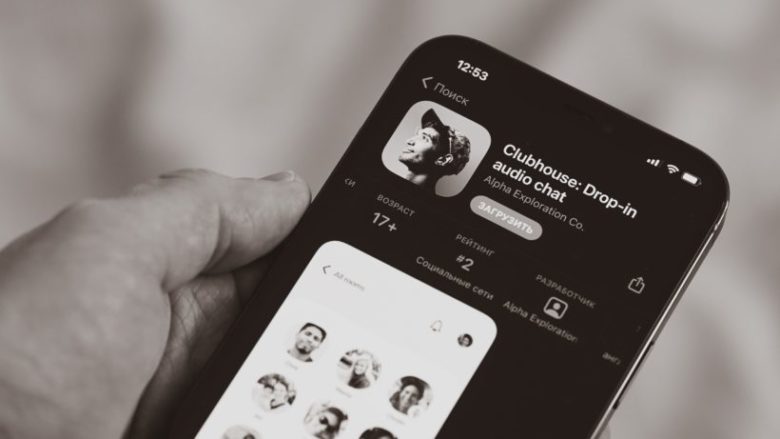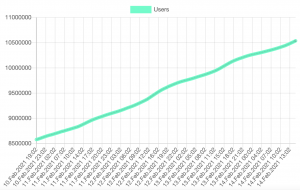Clubhouse Hits 10 Million Users

Elon Musk has been there. So has Mark Zuckerberg. Many other celebrities and ordinary people (more or less) also drop by almost daily turning Clubhouse into an integral part of the social media orchestra in some circles. Although the initial euphoria seems to have died down a bit, the new audio app in town continues to regularly host a broad array of virtual panel discussions.
But how many people actually use Clubhouse? The one thing that’s certain is the maximum number of users who can listen inside a “room”, as Clubhouse sessions are called. This figure is fixed at 5,000. Still, this does not give us an indication of the total number of accounts. Austrian developer Roman Mittermayr from TwentyPeople, who resides in London, found a smart way to get an idea of the figure by tapping into the app’s Private Search API and tracking the current number of all users who can be found via search. What he came up with was the following curve:

Mittermayor collects Clubhouse user figures every hour. Their calculations showed that last weekend the app reached 10 million users. Interestingly, the growth in user numbers is not exponential, as suggested by some observers (one user can invite two new users), but is rather linear. Still, in just four days, Clubhouse has expanded its user base from 8.6 to 10.6 million – apparently a sufficient figure to impress investors and make them put a $1 billion price tag on the app.
This is a pretty massive valuation for a new app but is still far from the huge figures posted by Facebook or Twitter, which are both known to be officially (“Spaces” in Twitter’s case) or unofficially working on products to compete with Clubhouse. It’s the same old story: whenever a fresh social app grabs the attention of several million users, big players are quick to pop in and copy it.
Shadow profiles
There is one thing you should know about Clubhouse that raises eyebrows: the app is pretty aggressive when it comes to reading the address books of its smartphone users. Only users who share contact information from their address books are allowed to invite new Clubhouse members. As many people are not dying to share their contacts, they create shadow profiles just for the sake of being able to join. Thus, Clubhouse seems to be full of shadow profiles of people who don’t even use the app.
The fact that Clubhouse collects data from people who don’t even use the app is easy to see through. The Invites section, positioned prominently on the interface, contains a list of people you can invite to join the service. They are listed with their names and their phone numbers which Clubhouse matches with the address data of other users to calculate how many of them already use the service. The app can also calculate a social graph.
This feature means that Clubhouse has access not only to the names and phone numbers of your friends who do not use the app, but also the data of companies, business partners, and family members. By the way, this is nothing new in the world of social media – Facebook, WhatsApp, and LinkedIn also use mobile and email contacts to grow their networks.






























